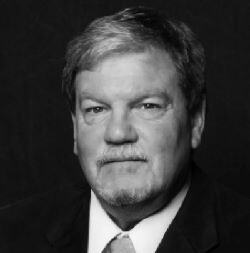Conflicting Agendas
Building the bridges for compromise

The irresistible force paradox posits that an immovable object and an unstoppable force are both implicitly assumed to be indestructible and that these are two opposing entities. The paradox exists because it rests on two incompatible premises that there can actually be such things as unstoppable forces and immovable objects simultaneously.
This may be a paradox in the scientific community, but to facility managers, reality is a better indicator than theory. This is partly due to their training, experience, and proclivity to take care of people. Their responsibilities go far beyond ergonomics and healthy buildings, it stretches around the world. Facts have proven that people cannot work on a planet that will not support them. The environment needs as much care as those who inhabit it.
FMs have become increasingly focused on long-term plans that will not solve problems in a day, put will prove beneficial in days to come. For FMs momentum builds into an irresistible force.
Corporate may agree in theory as the C-suite is aware of the importance of environmental, social and governance (ESG) reporting, how environmental health and safety promotes more productive workplaces, and how much customers are concerned about a company’s sustainability policies and actions. But corporations are concerned more about the short term. Instant gratification, not best-case-scenario futuristic plans, are their goals. Corporate financial policy is set in stone. They need a short return on investment (ROI) or meet an internal rate of return (IRR), which is the immovable object.
Having an agenda has different connotations in the business world. For FMs, it could mean having a list or outline of steps to be taken to effectively manage a program or mean a far-looking approach to project management. They plan for future contingencies and prepare for improving facility operations over time. Having an agenda could also mean an underlying ideological plan or program, such as a company’s stance on expenses and returns. Sometimes these agendas conflict with each other. To many FMs, short-term fixes are just Band-Aids. Instead of treating symptoms, FMs look longer term to cure the problem. Yet acquiring money for longer term goals may be a challenge.
Preparation
A collision is an instance of a conflict between opposing ideas, interests or factions, and FMs are incessantly met with resistance for their ideas, which could simply mean a difference in priorities. However, simplicity does not mean easy. When a collision occurs between experience and policy, it creates a major issue. But there is always room for hope. Consensus building is the best route to take when having reached an impasse.
Before any serious talks begin though, an FM must make appropriate preparations. One of the most important tools is a solid and substantive business case which captures the reasoning for initiating a project or task. When resources such as money or effort are required, they need to support a necessary business initiative.
A little light on the subject
An example could be for a retrofit of lighting fixtures from fluorescent bulbs to LED. The business case would be that this would improve employees’ comfort and satisfaction through better quality lighting, save on energy costs and reduce system maintenance costs. A convincing business case would capture both the quantifiable and nonquantifiable characteristics of a proposed project. Some examples would be contributions to the company’s ESG efforts, employee appreciation and long-term savings.
A business case must convince senior management of the importance and viability of the proposal. An FM needs to share background and research that helps the narrative and the resultant analysis that shows the project is worthwhile. Obviously, the cost of the plan must be explained in the context of connecting to the company’s goals and mission and any expected payback must be clearly identified.
Business cases can range from comprehensive and highly structured to informal and brief. Information included in a formal business case would be the need for the project, the proposed business benefits, the expected costs of the project, a gap analysis and the expected risks. The business case should also explain the negative effects of doing nothing including the costs and risks of inactivity. From this presentation, the justification for the project is defined. This initiative may be juxtaposed to business financial goals of a quick payback and IRR that is dictated by corporate, so sometimes battle lines are drawn.
Consensus
One of the most important achievements in an FMs career is to build consensus for their initiatives. They must be well-versed in creating general agreement among multiple parties promoting concord and harmony.
Consensus building starts by focusing attention on the future, then identifying options and working toward an agreement. This could be a visioning approach that involves assessing the strengths and weaknesses, opportunities and threats that define their current situation. FMs can explain ideal outcomes that would satisfy all those involved. Those in conflict find it easier to think about solutions in the future as opposed to problems in the present. This allows for more creative thought and strategies to achieve the proposed goals.
While visioning can be useful in most contexts, it can be particularly helpful when parties are entrenched in firm positions, The exercise of thinking about the future can produce more common ground than discussions that remain focused on the present. Part of consensus building revolves around negotiation.
Negotiation
FMs are known for their persistence. They persevere despite difficulties or delays in achieving success. They are aware of the benefits of achieving their goals and the consequences of deferring actions when they run into obstacles. FMs have the well-being of employees and the environment at the forefront of their consciousness and will do their utmost to provide the ways and means to ensure their well-being. When faced with obstinate reliance on strict corporate dictates, negotiation may be in order.
Tenacity and resolve are invaluable attributes when sitting down to negotiate and reaching a final determination. However, FMs must also learn other aspects of good negotiation. They must be an active listener while exercising patience for others. They must effectively state their point of view while respecting others to do the same. They should always maintain a positive attitude and not let emotions enter the discussions. Every FM must understand how to resolve conflict, as most negotiations are one stage in a longer-term business relationship.
There is an inherent power dynamic at work when negotiating with senior management. FMs must be fully cognizant of their priorities and how much latitude there is for tradeoffs. They must always keep in mind new factors based on the tenor of the discussions. The most important point is to understand what the C-suite values most and to present it as a case that will benefit them. For most of these executives, that means speaking directly to the bottom line. An FM must elaborate on what business outcomes can result from these discussions and who will benefit. They need to have a plan as to what needs to be done to bring about those outcomes. Finally, they need to engage those stakeholders who may have a vested interest in the desired results.
This is the time to accept that they need to listen carefully for where there might be space for bringing in other variables. Amendments might lead to concessions or other “hidden satisfiers” that will cost little but that will make the organization happy and smooth the way for consensus at the table.
Negotiating, as opposed to just bargaining or haggling, can create new value rather than just distributing it. New value is created by trades — asking for something that is needed and giving something in return. Having several negotiation issues to trade helps ensure that FMs can enlarge the pie rather than cutting ever-thinner slices of it during the process. Negotiation requires creativity.
Just in case
However, negotiation does include bargaining and one of the better techniques that can be used when this enters the picture is to find ways to enhance their bargaining power. FMs must cultivate a strong best alternative to a negotiated agreement (BATNA).
The more appealing a best alternative that an FM develops, the more comfortable they will feel asking for more in the current negotiation. It is hard to underestimate the importance of BATNA in negotiation. It relies on the options an FM can retreat to if a negotiation falls apart. It will help an FM identify what is most important to them and what compromises are acceptable if their initial plan fails.
Compromise
While it would be optimal to get consensus and agreement on a project, that will not always be realistic. Sometimes the two parties may need to reach a compromise. A compromise occurs when neither party gets everything but agrees to a result that benefits both. A full concession is highly unlikely as it denotes defeat. Only one side wins and gets what they want. A compromise is the settlement of differences by arbitration or by consent reached through mutual concessions.
Stating the case
FMs are on a mission. They may not have realized it when they entered the industry, but the condition of the environment, the ongoing evolution of the workplace and the necessity to prove value to the bottom line has changed the face of the profession. Implementing changes that will improve the health, welfare and comfort of anyone who enters their buildings is of utmost importance. Employees must be able to work to be productive. Saving energy and water to conserve resources and minimize greenhouse gas (GHG) emissions is critical. Saving money through these initiatives creates a positive image for the department.
However, the crux of the problems lies in the conjunction that all these initiatives cost money, which corporate hates to spend, and they are all long-term efforts with no immediate return, contrary to most corporate policies. Investments in renewable energy, carbon credits, renewable energy credits will benefit a company’s stance on sustainability, but payback is hard to define, and it may be years before it is realized. The replacement of older equipment to save energy, or the adoption of newer technology to streamline efficiency is costly and are not quick fixes.
Along with the care and maintenance of people, places and things, FMs must also cultivate their ability to persuade, cajole or negotiate to acquire what they need. They understand the importance of their agenda and must get senior management to buy in. As if FMs do not already have enough to do.

Bill Conley, CFM, SFP, FMP, LEED AP, IFMA Fellow, is a facility manager at Yamaha Motor Corp. in Cypress, California, USA. He previously served as owner and chief sustainability officer of CFM2, a facility management company. Conley has more than 40 years of experience in the facility management profession and has been a proponent of sustainable operations for more than 20 years. Conley has served on the IFMA board of directors, is a recipient of IFMA’s Distinguished Member of the Year award and has received the association’s Distinguished Author award three times. He has been a regular contributor to FMJ for almost 30 years and has authored more than 100 FMJ articles.
Read more on Leadership & Strategy , Communication and Networking
Explore All FMJ Topics









